Deep Drawing Of Sheet Metal
Deep Drawing
Deep drawing is a manufacturing process that is used extensively in the forming of sheet metal into cup or box like structures. Pots and pans for cooking, containers, sinks, automobile parts, such as panels and gas tanks, are among a few of the items manufactured by sheet metal deep drawing. This process is sometimes called drawing and is not to be confused with the bulk deformation process of drawing discussed earlier. A basic deep drawing operation could be the forming of a flat sheet into a three dimensional cup, or a box. The shape of a deep drawn part is not limited to a circle or square, more complex contours are possible. However, as the complexity goes up, the manufacturing difficulties increase rapidly. It is best to design the shape of a deep drawing to be as simple as possible. For the primary sheet metal deep drawing process the part will have a flat base and straight sides.
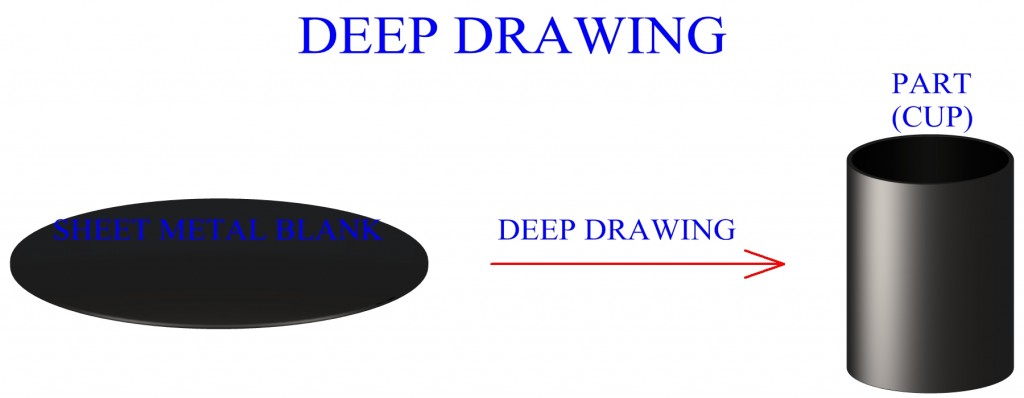
The Process
Deep drawing of sheet metal is performed with a punch and die. The punch is the desired shape of the base of the part, once drawn. The die cavity matches the punch and is a little wider to allow for its passage, as well as clearance. This setup is similar to sheet metal cutting operations. As in cutting, clearance is the lateral distance between the die edge and the punch edge. The sheet metal work piece, called a blank, is placed over the die opening. A blankholder, that surrounds the punch, applies pressure to the entire surface of the blank, (except the area under the punch), holding the sheet metal work flat against the die. The punch travels towards the blank. After contacting the work, the punch forces the sheet metal into the die cavity, forming its shape.
Equipment for sheet metal deep drawing processes would involve a double action, one for the blank holder and one for the punch. Both mechanical and hydraulic presses are used in manufacturing industry. Typically the hydraulic press can control the blankholder and punch actions separately, but the mechanical press is faster. Punch and die materials, for the deep drawing of sheet metal, are usually tool steels and iron. However, the range of materials for punch and die can span from plastics to carbides. Parts are usually drawn at speeds of 4 to 12 inches per second.

Deep Drawing Practice
Deep drawing is a sheet metal forming process that involves complex material flow and force distributions. As mentioned, the punch and die setup is somewhat similar to a sheet metal cutting operation, such as punching or blanking. Two main factors will cause the punch in deep drawing to draw the metal into the die cavity, rather than shearing it.
One major factor in deep drawing is the die corner radius and the punch corner radius. When cutting sheet metal, the punch and die edges do not have a radius. Sharp corners on the punch and die cause it to cut. A radius on an edge will change the force distribution and cause the metal to flow over the radius and into the die cavity. The other major factor causing the punch to draw the sheet metal and not cut it, is the amount of clearance. Clearance in cutting operations is relatively small, usually 3% to 8% of sheet metal thickness. In deep drawing manufacture, if the clearance is too small the sheet may be cut or pierced, (not well), despite the radius. Clearance in deep drawing manufacture is greater than sheet thickness, usually clearance values are 107% to 115% of sheet thickness.
For many calculations the sheet metal thickness is assumed to remain constant. However, there are changes in thickness in certain areas, due to the forces involved. In order to form the side walls of the part, material must flow from the blank’s peripheral over the die corner radius, then straight in the direction of the punch. Material forming the straight wall is under tensile stress that will naturally cause it to thin. Deep drawing process factors are controlled to mitigate thinning, but some thinning of the sheet metal is unavoidable. Maximum thinning will most likely occur on the side wall, near the base of the part. A correctly drawn part may have up to 25% reduction in thickness in some areas.
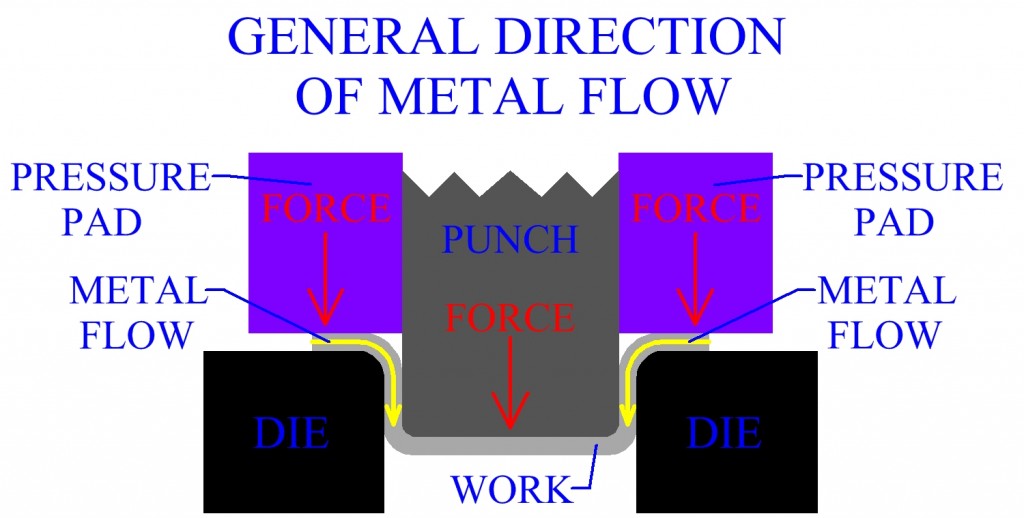
Drawing Ratio
Measurement of the amount of drawing performed on a sheet metal blank can be quantified. This can be done with the drawing ratio. The higher the drawing ratio, the more extreme the amount of deep drawing. Due to the geometry, forces, metal flow and material properties of the work, there is a limit to the amount of deep drawing that can be performed on a sheet metal blank in a single operation. Drawing ratios can help determine the maximum amount of deep drawing possible. The drawing ratio is roughly calculated as,
DR = Db/Dp.
Db is the diameter of the blank and Dp is the diameter of the punch. For shapes that are noncircular the maximum diameter is sometimes used, or occasionally drawing ratio is calculated using surface areas. The limit to the drawing ratio for an operation is usually 2 or under. Actual limits to the amount of drawing possible are also dependant upon the depth of drawing, punch radius, die radius, anisotropy of the sheet and the blank’s material.
Reduction
Another way to express drawing ratio is the reduction (r). Reduction is measured using the same variables as drawing ratio. Reduction can be calculated by r = (Db – Dp)/(Db).
Db and Dp being blank and punch diameters respectively. Reduction should be .5 or under. Often expressed as the percent reduction r = (Db – Dp)/(Db) X 100%. In this case the reduction should be 50% or under.
Redrawing Sheet Metal
If required percent reduction of sheet metal is over 50%, the part must be formed in multiple operations. Redrawing is the subsequent deep drawing of a work that has already undergone a deep drawing process. By using more than one operation, a greater magnitude of deep drawing can be accomplished.
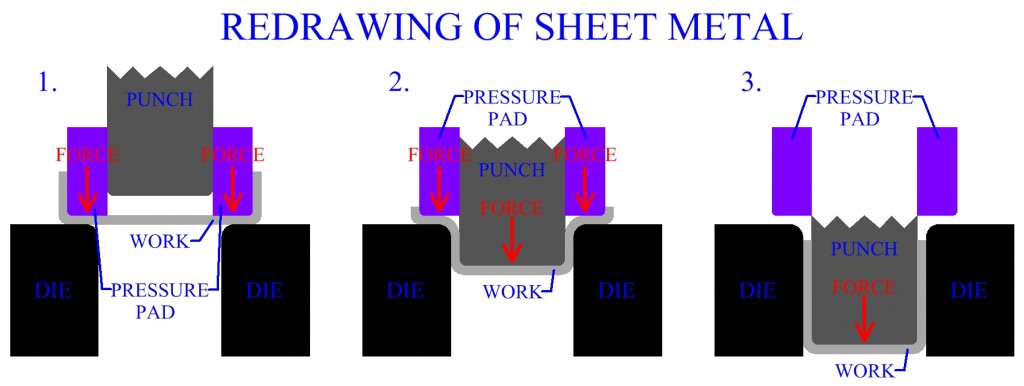
The amount of forming of the sheet metal that can be accomplished on the first redraw is less than on the original draw. For the original drawing of the blank 50% reduction is rarely used during industrial manufacturing practice. The initial reduction is usually 35% to 45%. First redraw is commonly performed at a 20% to 30% reduction. Second redraw can typically range from 13% to 16% reduction. If a severe amount of deep drawing is to be performed and several redrawing operations are necessary, then the part should be annealed every two operations. This will recover the material for further redrawing.
Deep drawing process design must include the drawing of intermediate part shapes, in situations requiring redrawing. For every redraw to be performed there will be one intermediate part.
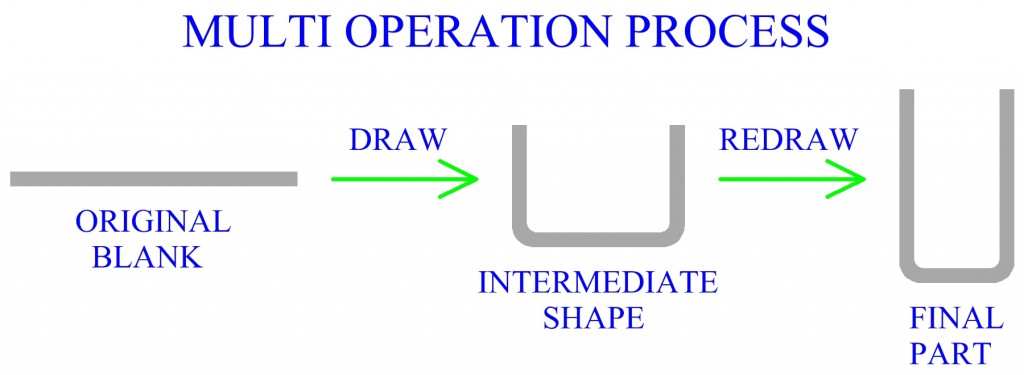
Intermediate shape design is important and unique tooling and setup will be required for each intermediate step. Each operation will affect the next one and analysis must be done for each step. When designing intermediate shapes, the sheet metal reduction should be considered and in most cases it can be assumed that the surface area of the blank, any intermediate shapes and the part, to be the same.
Reverse redrawing of sheet metal, or reverse drawing, is sometimes used to redraw parts. In reverse redrawing, the intermediate part is flipped over before being placed on the die for the next operation. This will cause the sheet metal to now be drawn in the opposite direction as the first draw.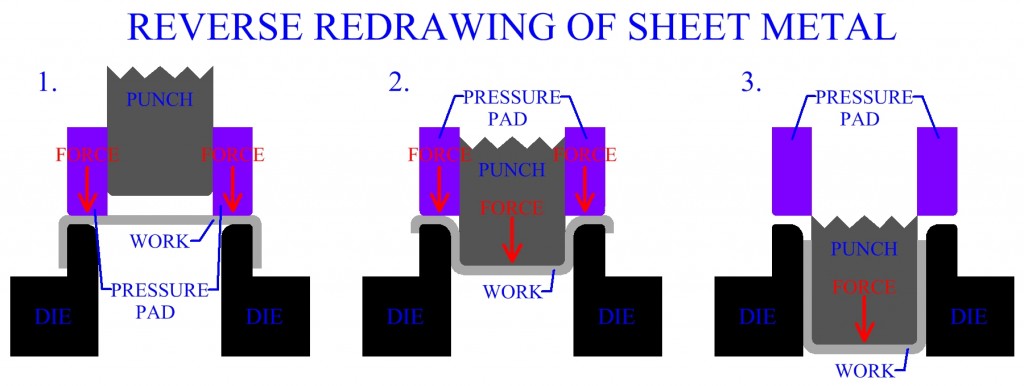
Forces In Deep Drawing Sheet Metal
Force used to accomplish a sheet metal deep drawing operation must be adequate enough to provide for the sheet’s deformation, enact proper metal flow and overcome friction during the process. Magnitude of force must not be too high or applied incorrectly, or else tearing of the sheet metal may occur. The punch and the blankholder will exert separate forces and force analysis should be done for both.
Understanding the material flow during the manufacturing process is essential to understanding the forces acting on the work. Imagine placing a piece of paper flat on a round cup. This is similar to a piece of sheet metal on a round die cavity. Now, imitating the action of the punch, the paper is forced into the cup to take the cylindrical form of the cup. What happens is the paper folds or wrinkles in the process. This is not how a sheet metal work piece should act during a deep drawing operation. One reason is that metal material can flow, unlike the paper. So instead of the paper, place a piece of aluminum foil on the cup. Aluminum foil is metal but it still wrinkles when forced into the cup. The reason why aluminum foil wrinkles when forced into the cup is because of the inadequate thickness of the foil.
Imagine now, a sheet metal blank being deep drawn into a round cylindrical part. The material under the punch gets forced into the cavity, pulling material with it, to form the walls of the part. Sometimes in deep drawing an amount of sheet metal material is not drawn into the die and forms a flange around the completed part. However, during a deep drawing operation all of the material not yet drawn over the die radius and into the die cavity is often referred to as the flange. During the ongoing process material from the flange is constantly being forced into the die. The diameter of the die cavity is smaller than that of the sheet metal blank and metal is flowing from the outer peripheral inwards.
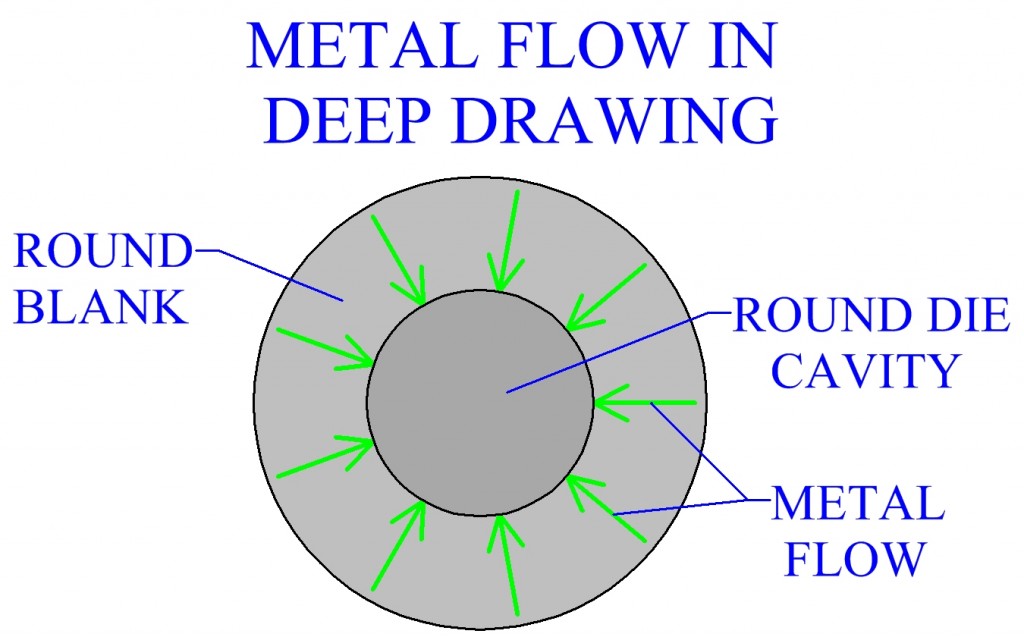
It can be illustrated that more material is being forced into smaller spaces, since the same material from the peripheral is moving into a circle of smaller diameter.
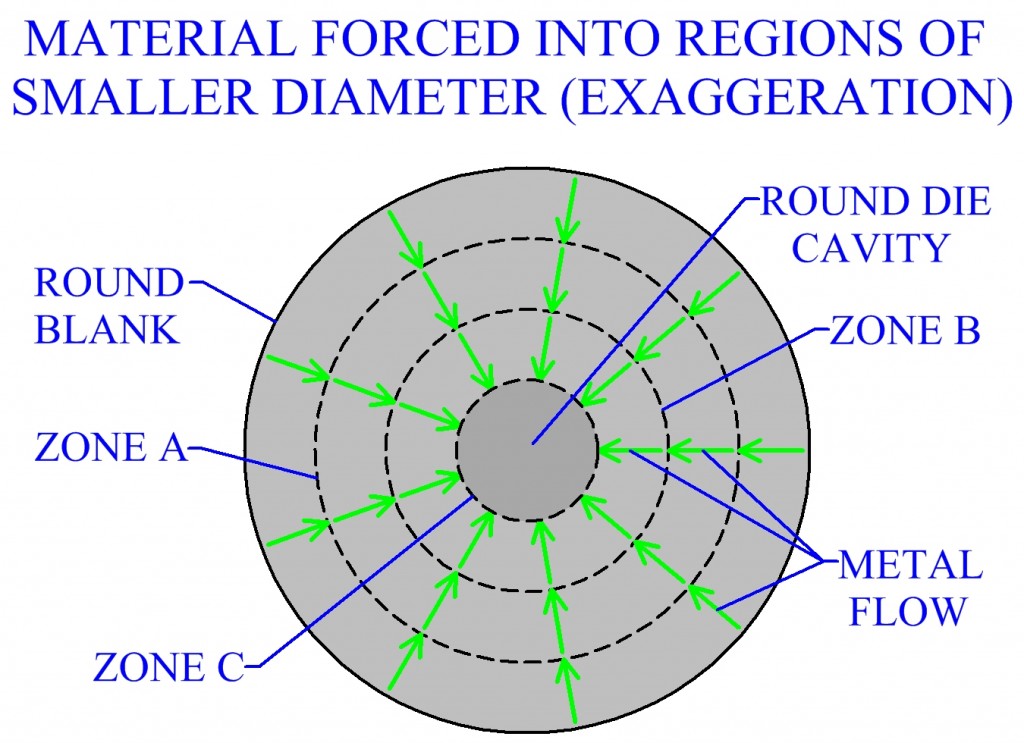
Metal flow can be observed in the figure above. As the deep drawing progresses metal from zone A is forced into zone B, metal from zone B is forced into zone C and metal from zone C is forced into the die cavity. This continues until eventually, (providing no flange in the final product), even the material in zone A is forced into the cavity. The constriction of space will cause compressive forces to act within the material. Tensile forces will also be present in the flange because of the drawing of the metal into the die.
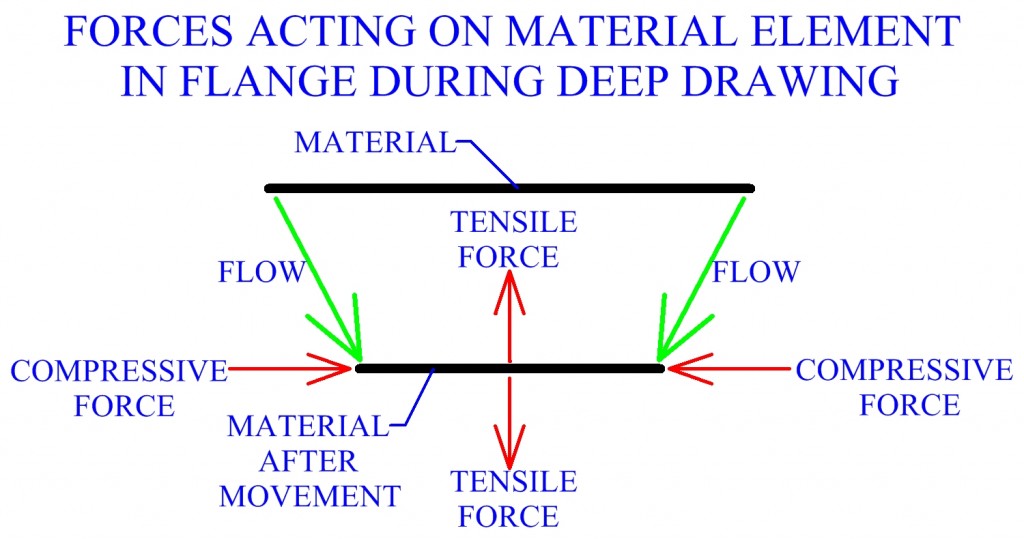
Compressive forces on material elements in the flange can be related to the analogy of a metal beam in compression, such as the one illustrated in the following figure.
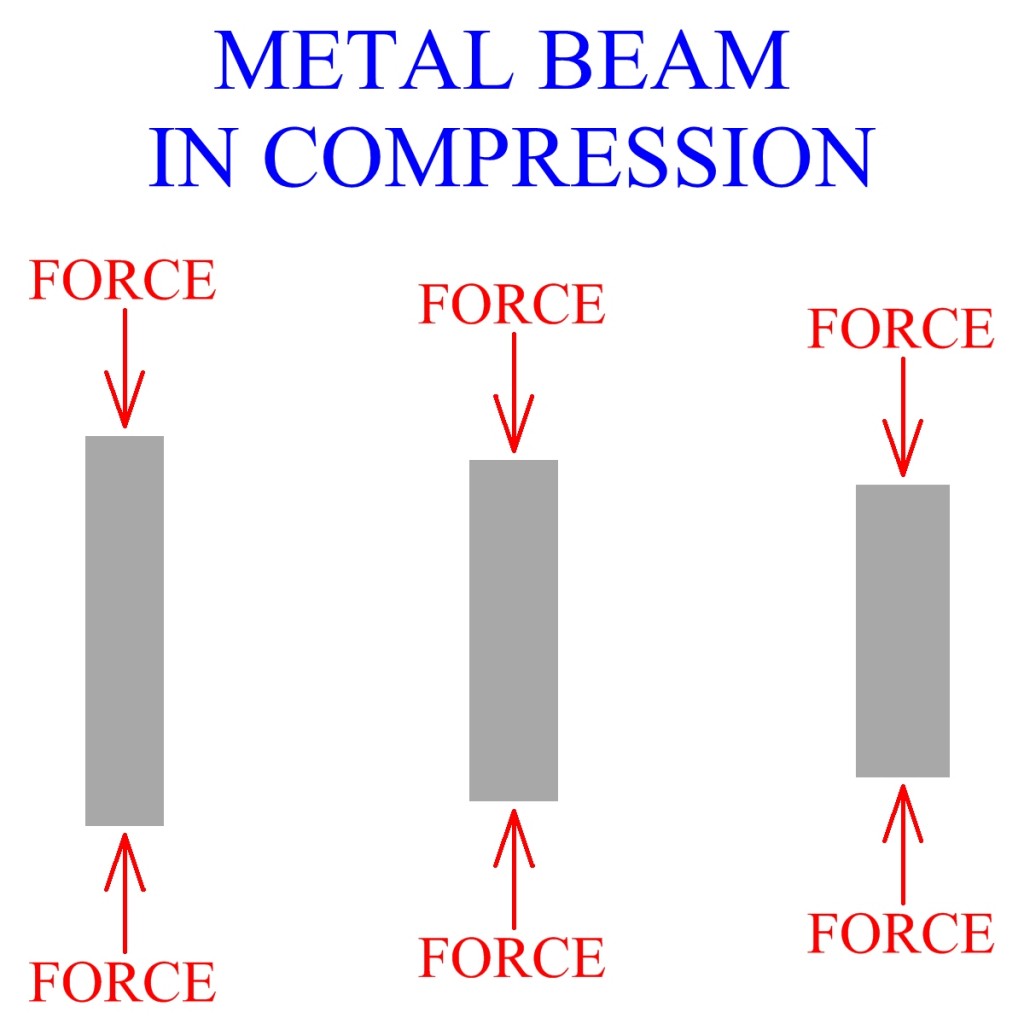
Now imagine decreasing the width of the beam. If the width becomes low enough, relative to length, the beam will tend to buckle under stress.
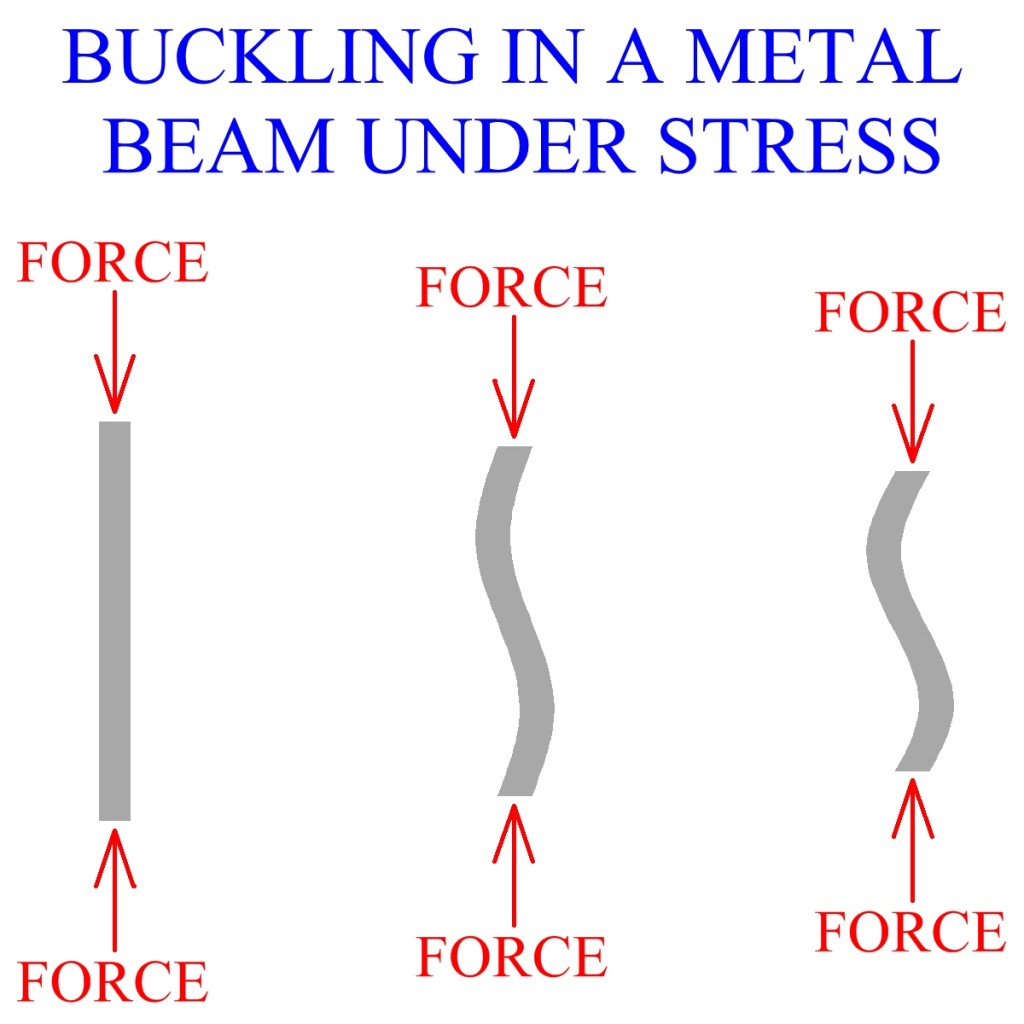
This is similar to the situation in the flange during a sheet metal deep drawing operation. As mentioned, the force exerted on the beam is similar to the compressive forces acting on the blank’s material. Reducing the width of the beam is equivalent to reducing the thickness of the sheet metal. The buckling of the beam is manifested in the wrinkling of the sheet metal. The thicker beam has a high enough width to allow for proper metal flow. A metal beam of greater width is equivalent to a thicker sheet metal blank. It is now evident that the lower the sheet metal thickness the more likely it is to wrinkle during deep drawing. Wrinkles start in the flange. Once wrinkling starts, it will continue to propagate. Wrinkles that start in the flange are pulled into the die and will end up in the part’s walls.
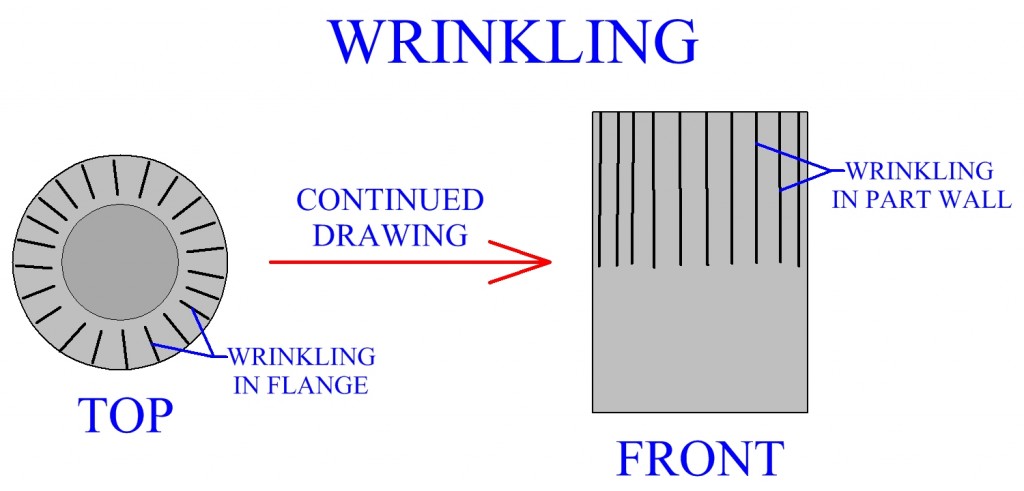
In order to solve the problem of sheet metal wrinkling a blank holder is used. By applying pressure to the surface of the blank, the blank holder can prevent wrinkling for many parts. The blankholder would be the equivalent to force applied over the side of the thinner beam, causing it to compress properly, rather than buckle. However, remember this is only an analogy to help understand the mechanics occurring. The actual situation is different, since forces and material flow are also occurring simultaneously in other directions.
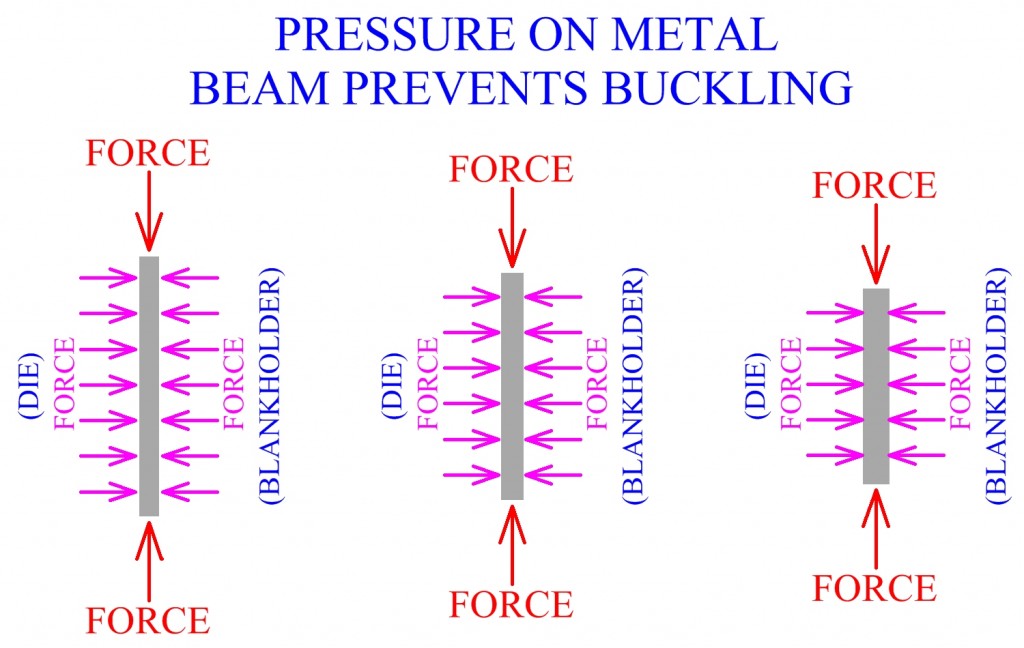
Sheet metal thickness is an important aspect of deep drawing process design. Thickness to diameter ratio is a main factor used to quantify the geometry of a blank and can be calculated by t/Db. Thickness is represented by t, and Db is the diameter of the blank. For noncircular sheet metal parts the maximum diameter is sometimes used. Usually it is expressed as a percent t/Db X 100%. Blankholders are generally effective for thickness ratios of 1% and over. Ratios of .5% to 1% are marginal and for thickness ratios under .5% even a blankholder may not prevent wrinkling.
Die corner radius and punch corner radius are important in force distribution and material flow during the sheet metal deep drawing process.
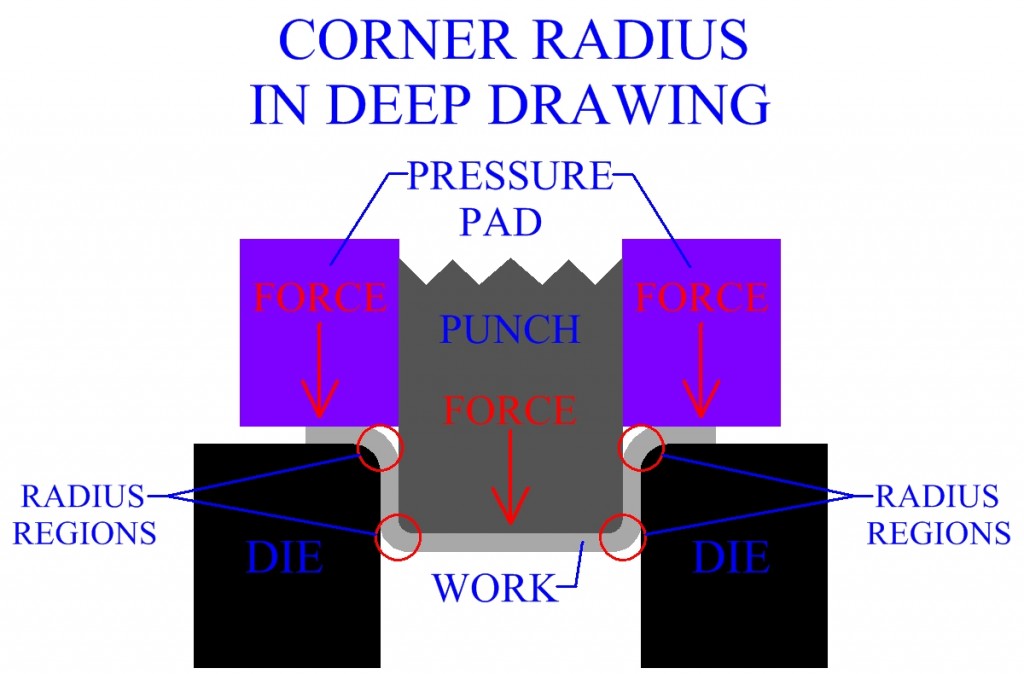
Corner radius, for deep drawing manufacturing, should be sufficient to allow for smooth metal flow. If a radius is too small, the sheet metal can tear. Often this occurs as the material is traveling over the corner. Optimization of corner radius should be achieved, because if the radius is too large it may cause wrinkling. While low corner radius can be a source of stress, that can initiate tearing at another location in the part. However, sometimes the location of the occurrence of the tear, in the sheet metal, will be an indication of the cause.
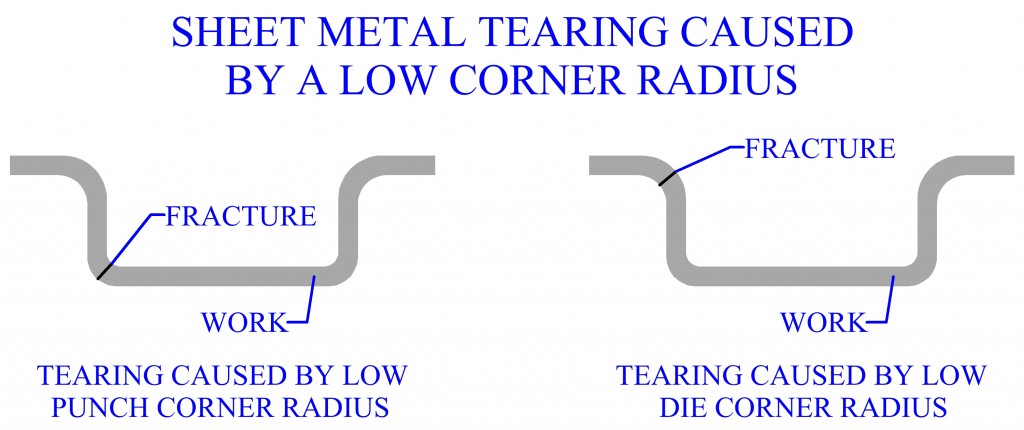
Forces involved in the formation of the part wall are also important.
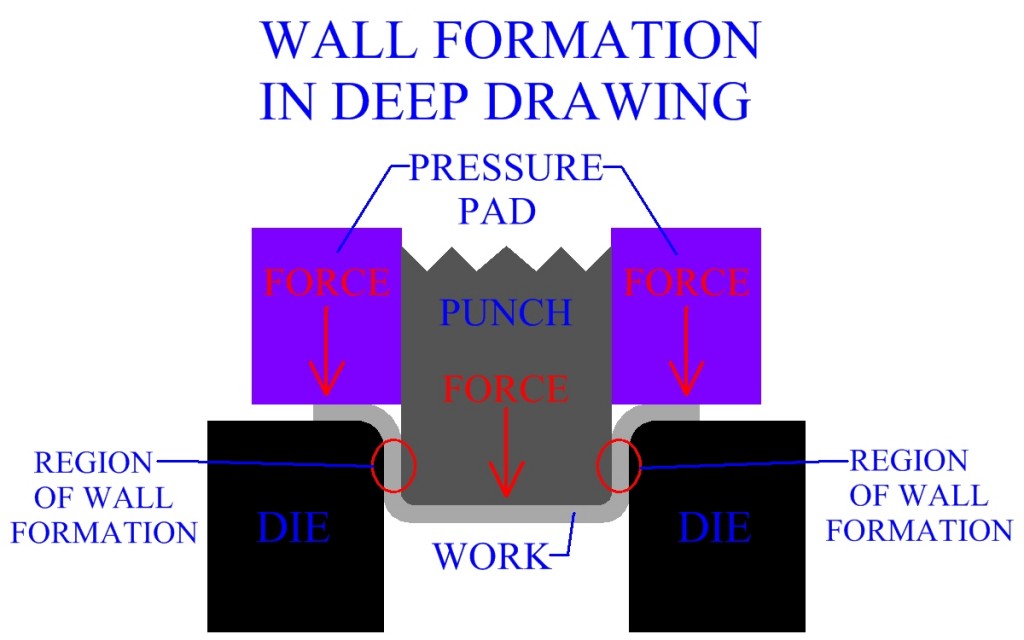
As the punch progresses, it draws material from the flange into the die cavity, increasing the length of the part wall. Metal forming the part’s walls is in tension. Even though material is constantly being drawn from the flange region to supply the growing part walls, the tension forces will tend to create a thinning effect. Thinning will usually be greatest near the part’s base. The decrease in thickness, occurring in the walls of a deep drawn part, is mitigated by control of process parameters. A certain level of thinning is usually unavoidable. Often, the manufacturing process of ironing is employed to finish deep drawn parts by evening the wall thickness.
Punch force and blankholder force should be determined when designing a particular sheet metal deep drawing operation. Punch force will vary throughout the operation. Commonly, the punch force will reach its maximum at about 1/3 of the stroke. Both punch force and blankholder force are dependent on punch and die geometry, punch and die radius, blank geometry, blank thickness, blank material and friction. Although it will differ, a common value for the blankholder force is about 30% to 40% of the maximum punch force. References are available to calculate these forces, based on these variables.
Blank Optimization For Deep Drawing
Sheet metal blank material, thickness and shape are major elements in deciding the nature of the metal flow and forces. All the factors involved in a deep drawing manufacturing process will have an effect on the quality of the part. Sheet metal parts can be tested for formability. Blanks are often printed with a square grid with circles in each grid box. The squares and circles distort with the sheet metal as the process occurs. After drawing, the blanks can be studied to determine blank distortion, thinning and the general direction of metal flow as a result of the deep drawing process. By examining different proportions of bi-axial straining and areas of tearing, an understanding of the blank’s behavior can be created. Forming limit diagrams are often constructed to quantify the results of these experiments.
One major goal is to optimize the shape of the sheet metal blank for a certain deep drawing process. Excess material in the work can interfere with metal flow and increase forces acting within the blank while drawing. In order to optimize the shape of the sheet metal blank, the flow of material during an operation must first be known. A common deep drawing is a square box. When a square box is drawn from a square blank it is obvious that the metal does not flow evenly into the die from all directions.
Metal flows faster and easier into the die cavity from the sides of the blank than from the corners. More complex metal flow at the corners causes more impedance to material movement. Less metal is drawn from these sections as a result. Removal of material, from areas such as this, will improve metal flow and reduce forces. The optimal blank shape will vary for different parts and contours. Computer programs have been developed to predict such shapes, given the parameters. However, it should be remembered that actual trail and error testing is a vital part of deep drawing process design and sheet metal manufacturing.
Defects In Deep Drawing Manufacturing
Defects that occur during deep drawing of sheet metal can be controlled by careful regulation of process factors. Tearing is one of the most common defects. Excessive thinning in areas of the sheet metal is also an unwanted defect. Causes of these are mostly too high or improper force distribution and material considerations. Many times the reduction ratio needs to be evaluated. Ratios for initial reduction are usually 35% to 45%, but can be lower. Redraws are always less. Reduction ratios may need to be lower, or annealing of the metal may be necessary to allow for sufficient redrawing. Usually maximum thinning of the cup wall occurs near the base. For this reason, tearing of the sheet metal is most likely to occur in this region even if the stress is originating somewhere else.
Another reason for the tearing of the sheet metal may be excessive force caused by material impediments, due to an inefficient blank shape. When tearing occurs at the corners of the wall it may indicate a problem with the blank’s geometry. Surface of the blank is important also, gouges, scratches and pits can all cause propagation of cracks. Blankholder force must be sufficient. However, friction between blankholder, blank and die surfaces will act to resist the movement of the blank’s material into the die. Thus, excess friction will increase the force the punch exerts to draw the sheet metal. Higher punch forces usually cause a tear in the weakest spot, predominately in the cup wall near the base. For this reason, the blankholder force must not be too high.
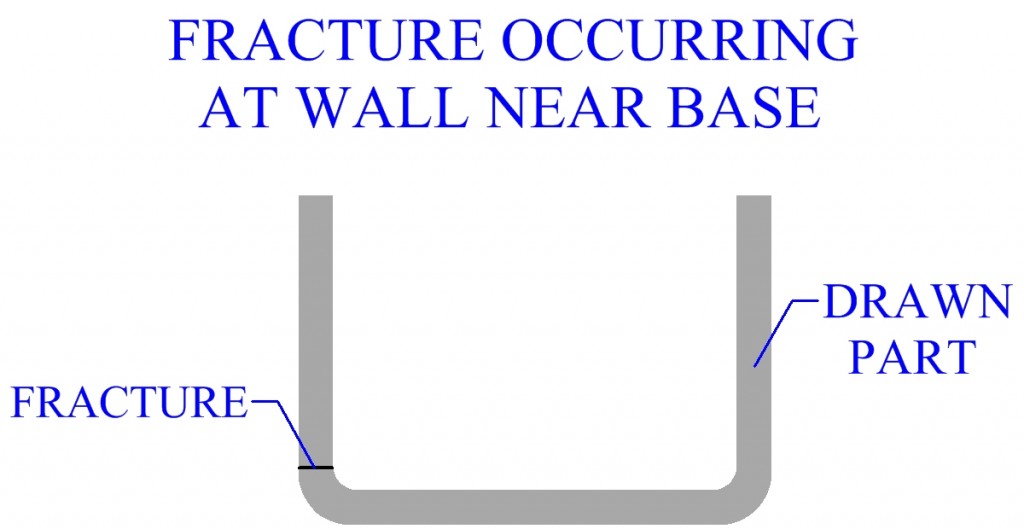
Die and blankholder surfaces for deep drawing sheet metal must be as smooth as possible, they should be ground and lapped to mitigate friction. Any type of friction will increase force, hence stresses in the material. Friction between the punch and work surfaces, as well as friction over corners, can be a source of failure. Lubrication is important in deep drawing of sheet metal. Lubrication will allow for easier metal flow and more uniformly distributed metal strains, due to decreasing friction. Lubrication also helps to reduce wear on tooling and machinery. Lubricants are applied to both sides of the sheet metal blank. Common lubricants used in deep drawing include oil, soap, emulsions, wax and sometimes solid lubricants.
Wrinkling is another common defect and was discussed in detail earlier. Wrinkling may often occur if the blankholder force is too low. Therefore optimization of blankholder force is necessary, since too high a force will cause excess friction. Sheet metal thickness is an essential parameter. As stated earlier, with a thickness ratio of .5% or under even a blankholder may not stop wrinkling. If corner radius is not high enough tearing may occur, but if the corner radius is excessive this may also cause wrinkling. Corner radius, like holding force, must obtain an optimum value.
Earing is a problem characteristic to deep drawing. Earing is the formation of wavy edges at the open end of the drawn cup. These are usually trimmed. The anisotropy of a particular sheet metal blank is the predominant source of earing.
Surface scratches or irregularities may appear on drawn parts. Make sure punch and die surfaces are smooth. Other causes of surface scratching could be improper clearance, or inadequate lubrication.
Drawbeads
Drawbeads are sometimes used to help regulate metal movement during deep drawing manufacture. Drawbeads bend and unbend metal as it travels into the die cavity, thus altering its flow. Drawbeads can reduce the necessary blankholder force.
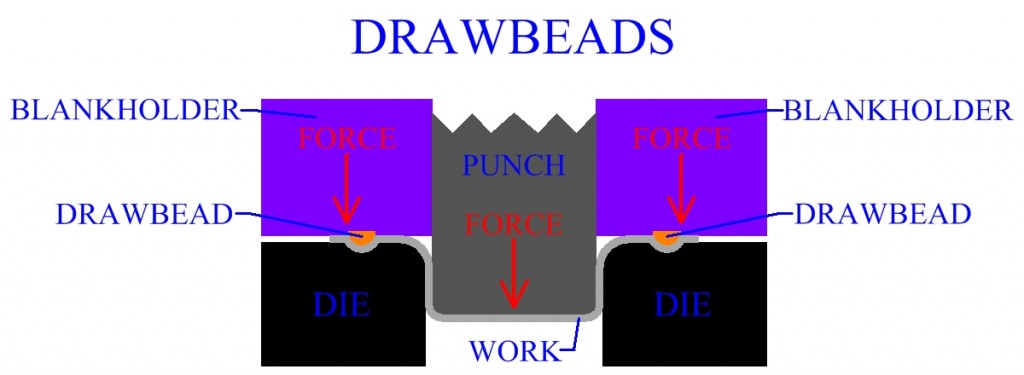
Drawing Without A Blankholder
In some situations sheet metal deep drawing can be performed without a blankholder. This makes the manufacturing process simpler and tooling cost lower, in cases that it can be applied to. The process requires sheet metal with a high thickness ratio, to avoid wrinkling. For deep drawing without a blankholder thickness ratio should be at least 3%. A sheet metal blank is placed on a die and pushed through by a punch, similar to the standard deep drawing process. The die, when drawing without a blankholder, will have a special curve to facilitate the forming of the part in this manner.
Irregular Deep Drawings
Common non standard deep drawing part geometries include stepped, tapered and domed cups. Stepped parts can be created by partial redrawing. Domed cups are formed with a stretch forming type process. Tapered cups can be manufactured by first producing stepped cups, then the sides are formed to create the tapered shape.
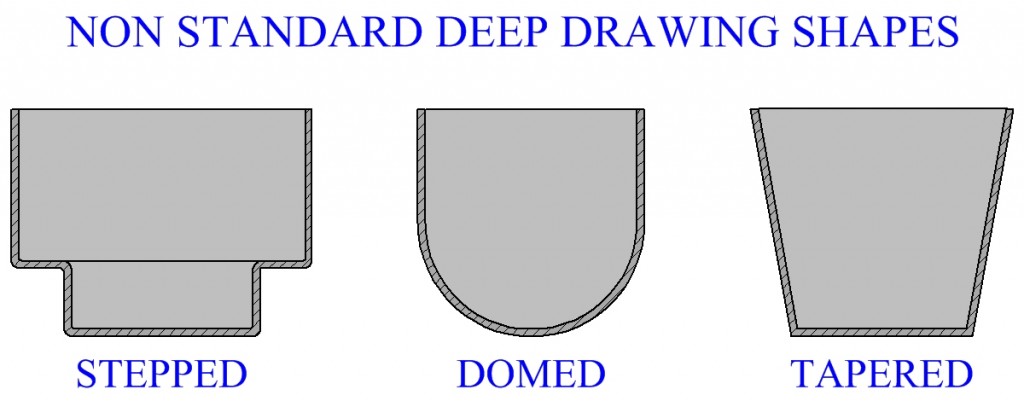
Embossing
Embossing is a sheet metal forming operation related to deep drawing. Embossing is typically used to indent the metal with a design or writing. This manufacturing process has been compared to coining. Unlike coining, embossing uses matching male and female die and the impression will affect both sides of the sheet metal.
Designing A Deep Drawing Operation
Designing a deep drawing manufacturing process will require planning, calculations and probably some in house testing. Calculate the surface area of the finished part and allow for a trimming allowance. Set the surface area of the part equal to the surface area of the sheet metal blank, then solve for Db. Extra material can be added to the blank, (ie. +10% Db), this will create a flange that can be trimmed off latter. This can help calculate a standard optimum blank shape for the operation.
Measure the thickness ratio = t/Db X 100%. Thickness ratio should be over 1% or wrinkling may be a problem. Calculate percent reduction. r = (Db – Dp)/(Db) X 100%. If the percent reduction is over 50% plan for redrawing operations. Redrawing will require the design of intermediate shapes. When designing intermediate shapes, consider the reduction, then set the surface areas of the blank, intermediate parts and final drawing to be equal.
Required punch and blankholder force can be calculated based on blank shape, blank thickness, punch and die shape, punch and die corner radius, sheet metal material and friction. Deep drawing process iteration through trial and error can optimize the manufacturing operation over time. Process factors such as amount of reduction, blank shape, corner radius, or blankholder force may have to be adjusted based on the results of previous processes.
Source – TLoM
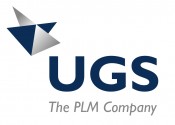
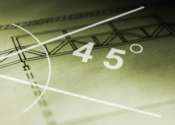

Leave a Reply